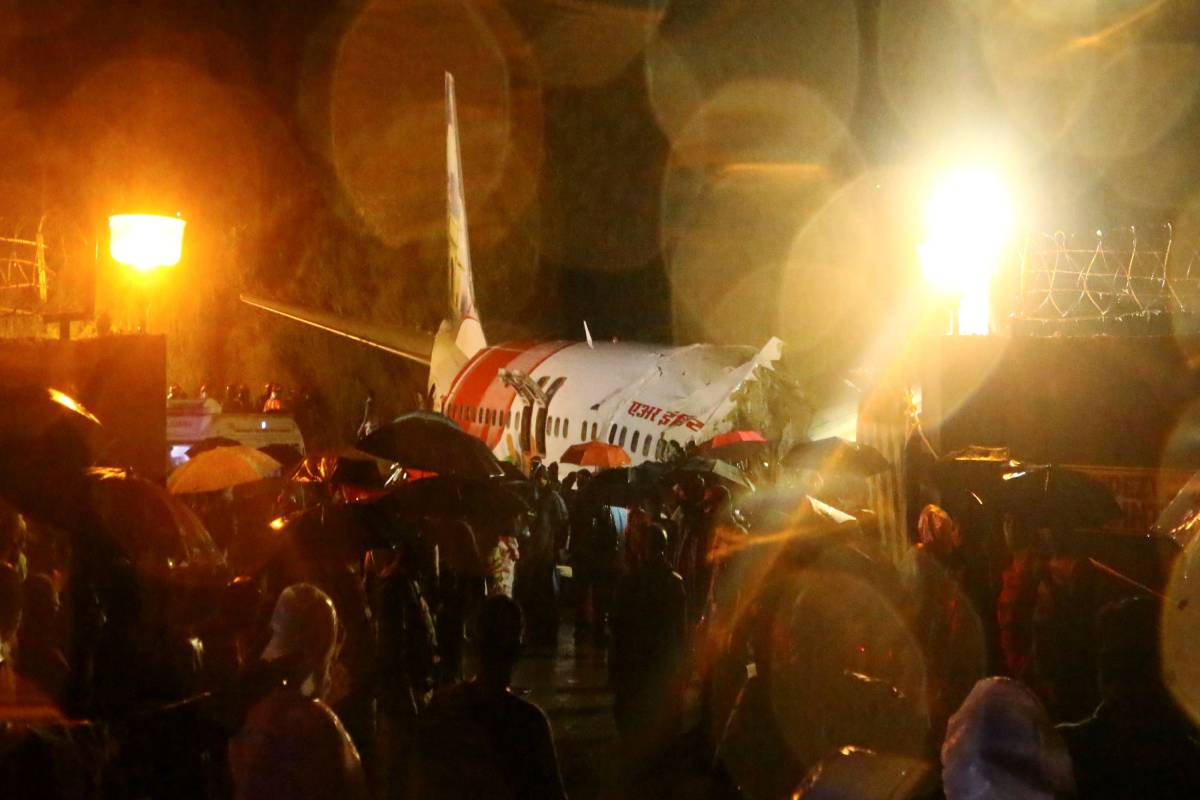Coming out with its final probe into the deadly plane crash at Kozhikode airport in August last year, the AAIB has made 43 safety recommendations, including installation of an approach radar at the aerodrome and a DGCA study to establish prevalence of use of non-prescribed medications amongst aircrew, especially for diabetes.
The report, released by the Aircraft Accident Investigation Bureau (AAIB) on Saturday, has made 57 findings about the crash of the Boeing aircraft that killed 21 people, including the 2 pilots, and left several people injured. There were 190 people onboard the plane, coming from Dubai, and overshot the runway amid light rain before breaking into pieces.
From systemic failures to Air India Express’s poor crew resource management to possibility of visual illusions due to low visibility and suboptimal performance of the PIC’s (Pilot In Command) windshield wiper, AAIB has mentioned about various possible causes.
The report has made extensive safety recommendations to Air India Express, Airports Authority of India (AAI), Directorate General of Civil Aviation (DGCA), AAIB and the Indian Meteorological Department (IMD).
“The investigation team is of the opinion that the role of systemic failures as a contributory factor cannot be overlooked in this accident,” the report said.
It noted that a large number of similar accidents/ incidents that have continued to take place, more so in AIXL (Air India Express Ltd), reinforce existing systemic failures within the aviation sector.
“These usually occur due to prevailing safety culture that give rise to errors, mistakes and violation of routine tasks performed by people operating within the system. Hence, the contributory factors… include both the immediate causes and the deeper or systemic causes,” the report said.
While noting that the “actions and decisions of the PIC (Pilot In Command) were steered by a misplaced motivation” to land back at Kozhikode to operate next day morning flight AXB 1373, AAIB said unavailability of sufficient number of captains at Kozhikode was the result of AXIL’s faulty HR policy which does not take into account operational requirement while assigning permanent base to its captains.
“There was only 01 Captain against 26 First Officers on the posted strength at Kozhikode,” it pointed out.
Stating that the PIC had vast experience of landing at Kozhikode under similar weather conditions, AAIB said that experience might have led to over confidence leading to complacency and a state of reduced conscious attention that would have seriously affected his actions, decision making as well as CRM (Crew Resource Management).
“The PIC was taking multiple un-prescribed anti-diabetic drugs that could have probably caused subtle cognitive deficits due to mild hypoglycaemia which probably contributed to errors in complex decision making as well as susceptibility to perceptual errors,” it noted.
Poor CRM has been cited as a major contributory factor in the crash, AAIB said, adding that as a consequence of lack of assertiveness and the steep authority gradient in the cockpit, the First Officer did not take over the controls in spite of being well aware of the grave situation. “The lack of effective CRM training of AIXL resulted in poor CRM and steep cockpit gradient”.
AAIB has made various recommendations to the airline citing “failure of the AIXL pilot training programme to impart the requisite skills for performance enhancement due to lack of its effectiveness”.
Regarding HR management, the report said that AIXL should take into consideration the quantum of flights originating from respective bases and accordingly assign them as ‘home base’ especially for the captains.
It also noted that the airline does not have an independent medical department and recommended employing aviation/aerospace medicine specialists.
Noting that DFDR data monitoring is the most effective tool to identify exceedance and provide suitable corrective training in order to prevent runway accidents like the crash of AXB 1344, AAIB said the action taken report submitted by AIXL on the said findings were accepted by DGCA year after year without ascertaining its implementation or giving due importance to its adverse implications.
DFDR refers to Digital Flight Data Recorder (DFDR).
In recommendations to AAI, the report said it should emphasise about precautions required to be taken while deciding the change of runway in adverse weather during ab-initio training of ATCO and annual refresher.
“The ARFF crew at Kozhikode were not familiar with the type of aircraft, which resulted in poorly coordinated rescue operations and delayed evacuation of the pilots from the cockpit,” it added.
AAIB has recommended installation of an approach radar at the Kozhikode airport as it has a hilly terrain and experiences extended adverse weather conditions as well as a wider perimeter road for the aerodrome to facilitate quick movement of emergency vehicles.
“In Nov 2019, DGCA during their surveillance had made certain observations regarding deficiencies in conduct of mock drills. The observed deficiencies still existed as on the date of accident. In order to achieve the desired training outcomes from the mock drills, it is recommended that there must be a timely follow up action on all deficiencies observed,” the report said.
According to the report, DGCA should issue directions to all scheduled and non-scheduled operators to educate their aircrew regarding the aeromedical consequences of self medication.
DGCA may undertake a study to establish prevalence of use of non-prescribed medications amongst aircrew especially for diabetes, it added.
Further, AAIB noted that DGCA may advise its officials to participate in discussions whenever required by the investigation team.
Among others, the report said that DGCA may study the feasibility and efficacy of ‘Child Restraint System’ for safety of infants and children on board an aircraft.
It is recommended that DGCA may ensure “periodic surveillance of flights to critical and table top runways including ‘red eye’ flights” and increased surveillance should be carried out during monsoons.
Availability of runway centreline lights would have certainly enhanced the spatial orientation of the PIC, the report said.
Among other aspects, AAIB noted that the Tower Met Officer (TMO) was not available in the ATC tower at the time of the accident, adding that the airfield was under two concurrent weather warnings and it was mandatory for the TMO to be present to update and inform the fast changing weather variations to enhance air safety.
“The absence of a detailed proactive policy and clear cut guidelines by the regulator on monitoring of Long Landings at the time of the accident was another contributory factor in such runway overrun accidents.
Advertisement











